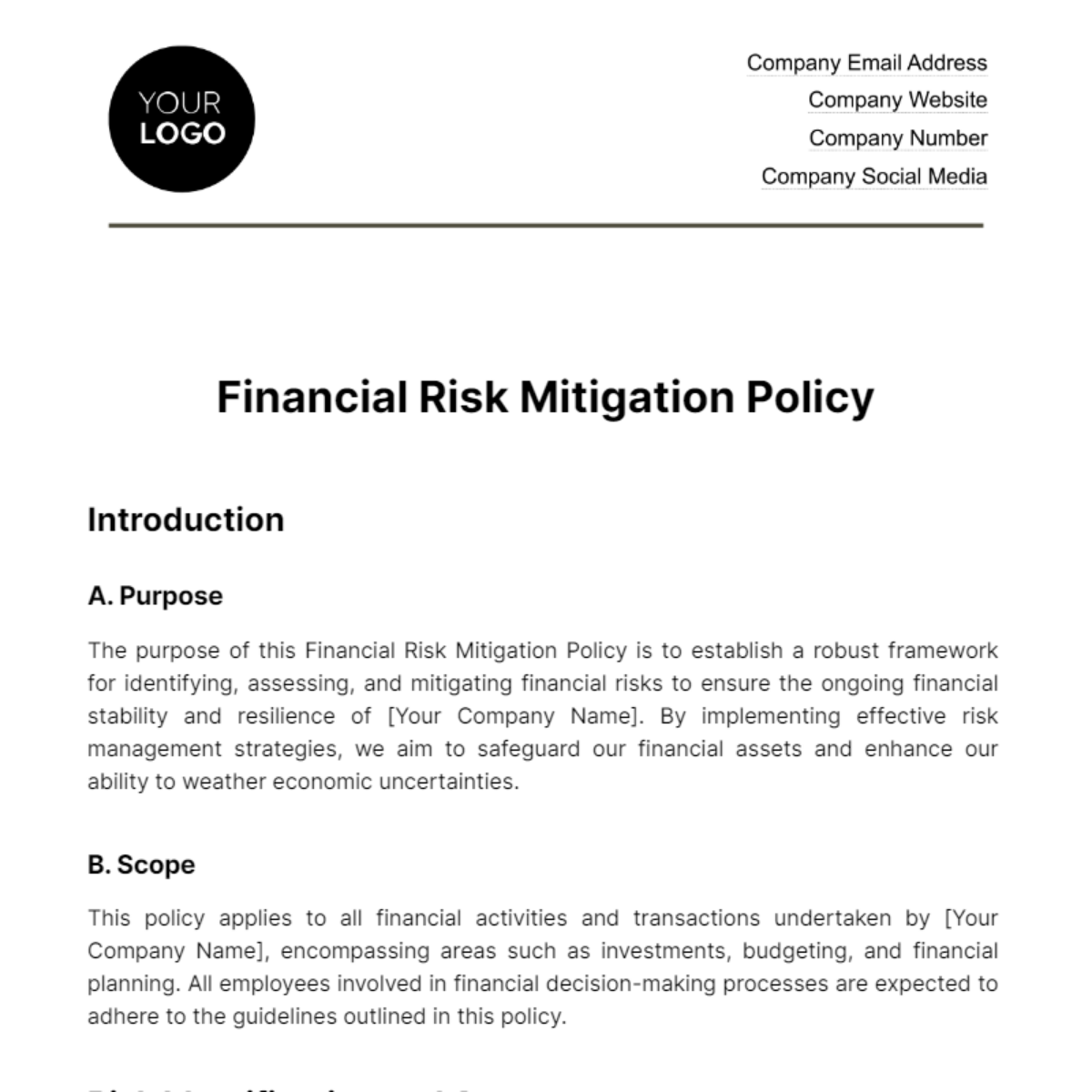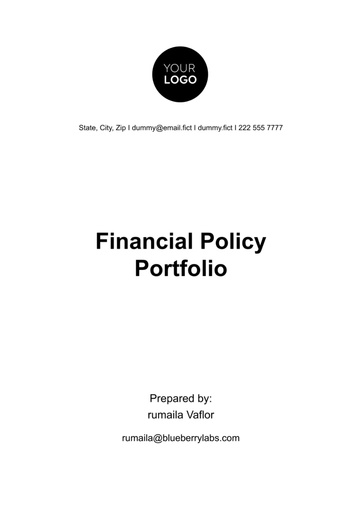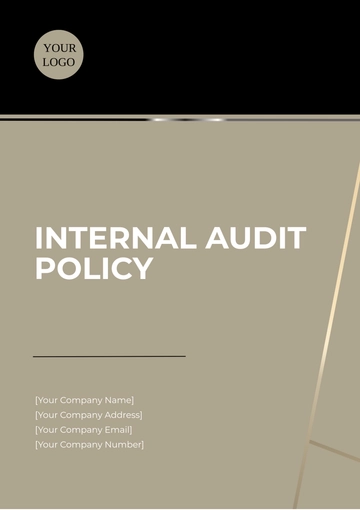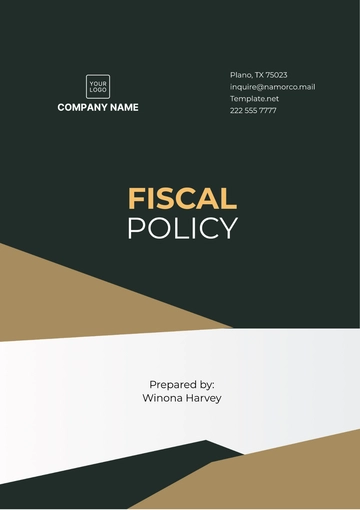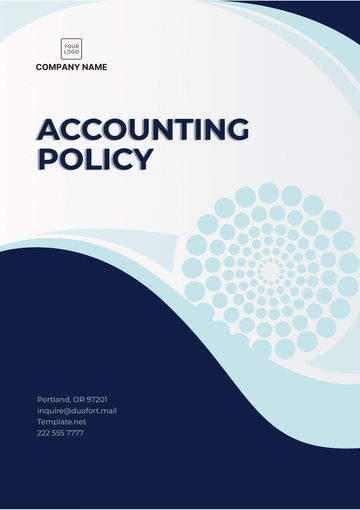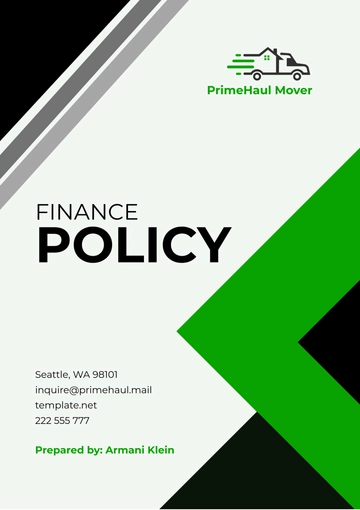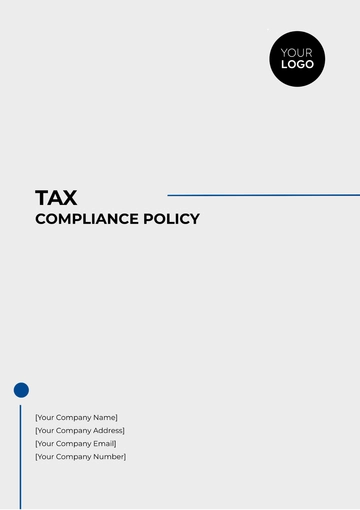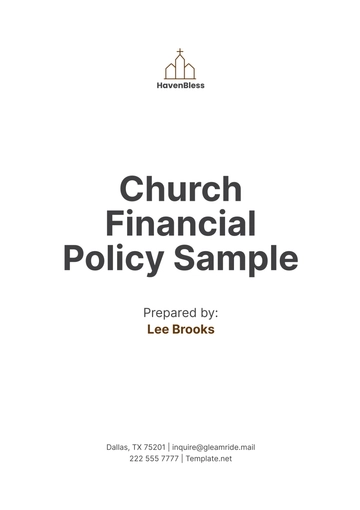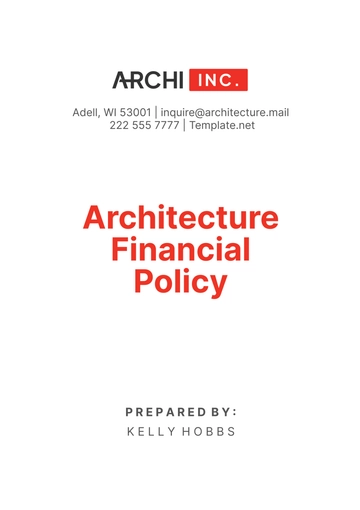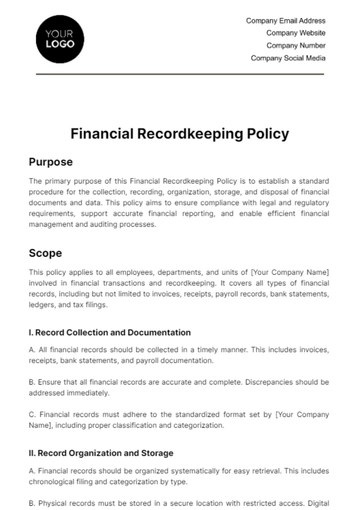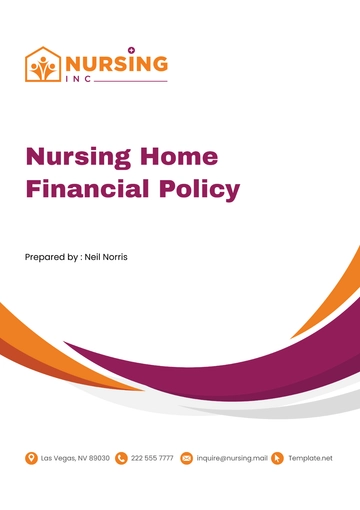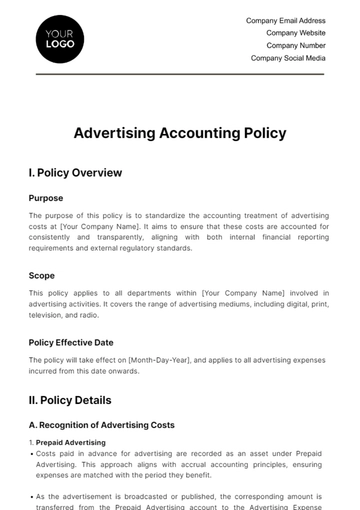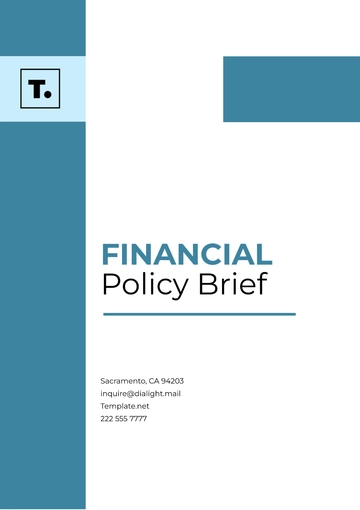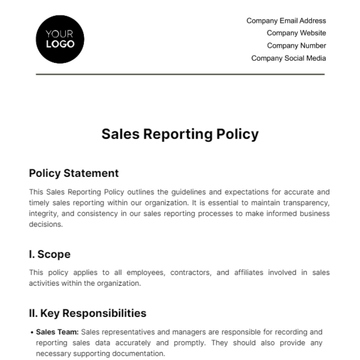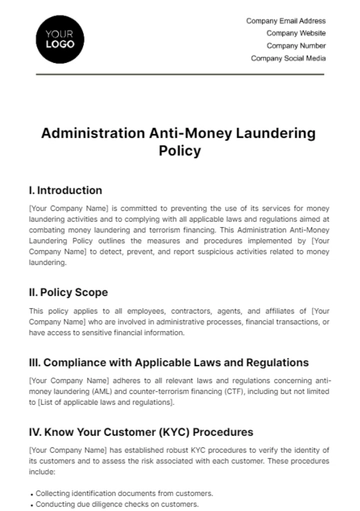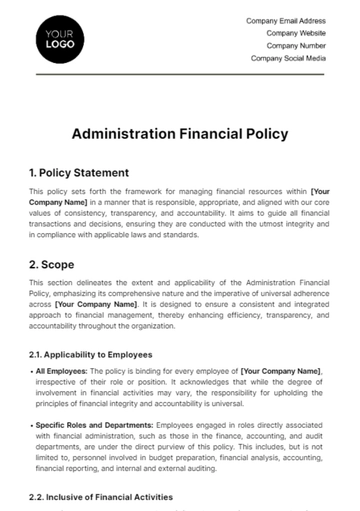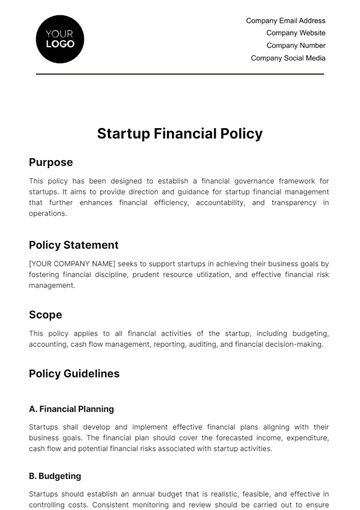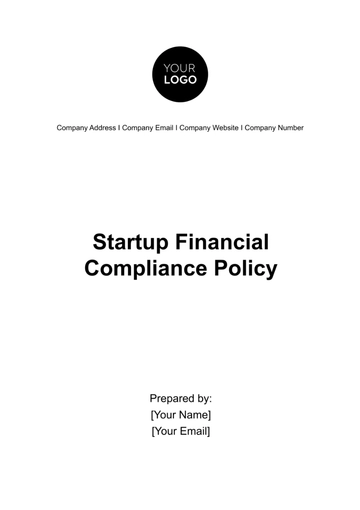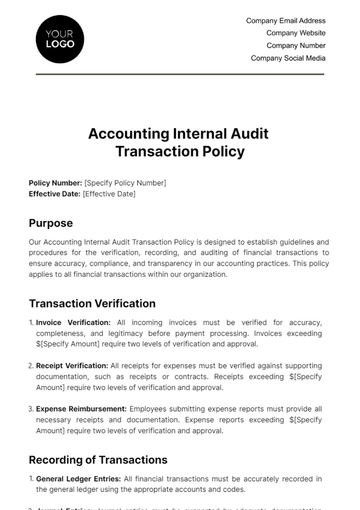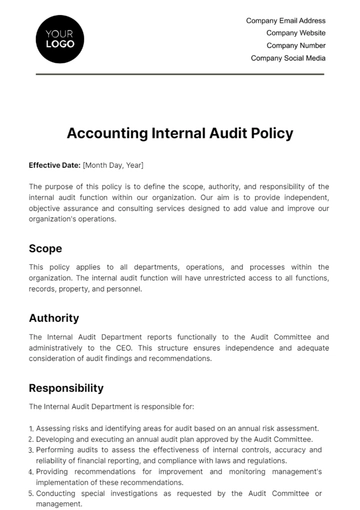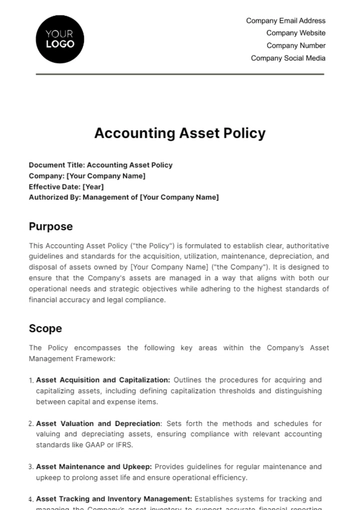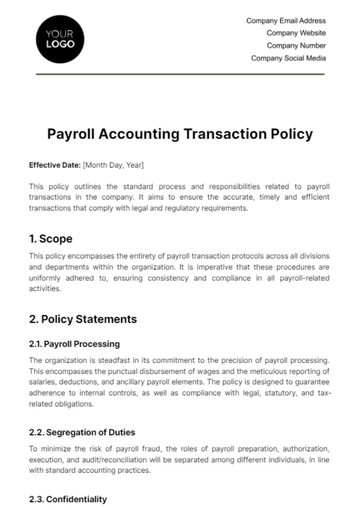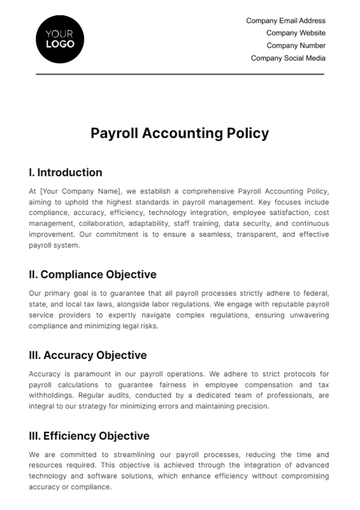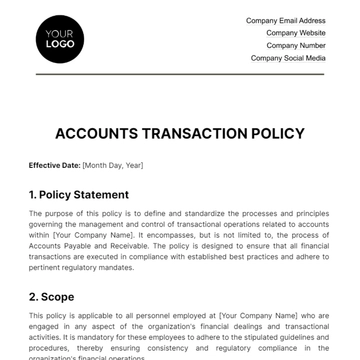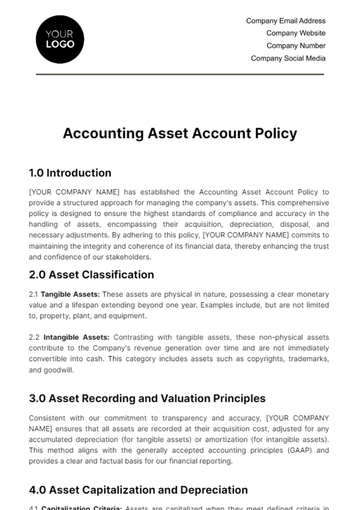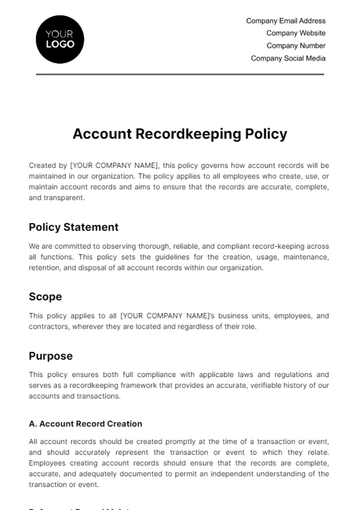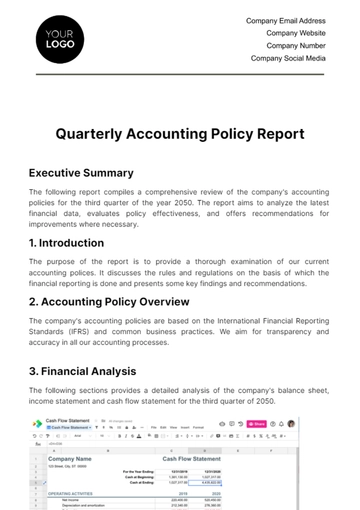Financial Risk Mitigation Policy
Introduction
A. Purpose
The purpose of this Financial Risk Mitigation Policy is to establish a robust framework for identifying, assessing, and mitigating financial risks to ensure the ongoing financial stability and resilience of [Your Company Name]. By implementing effective risk management strategies, we aim to safeguard our financial assets and enhance our ability to weather economic uncertainties.
B. Scope
This policy applies to all financial activities and transactions undertaken by [Your Company Name], encompassing areas such as investments, budgeting, and financial planning. All employees involved in financial decision-making processes are expected to adhere to the guidelines outlined in this policy.
Risk Identification and Assessment
A. Risk Categories
Financial risks affecting [Your Company Name] are categorized into the following:
Market Risk: This pertains to potential losses due to fluctuations in market conditions such as interest rates, exchange rates, and commodity prices.
Example: A sudden increase in interest rates impacting the value of fixed-rate investments.
Credit Risk: The risk of financial loss due to the failure of counterparties to fulfill their financial obligations.
Example: Non-payment by a customer or a default on loans by a financial institution.
Liquidity Risk: This involves the inability to meet short-term financial obligations, potentially leading to financial instability.
Example: Insufficient cash reserves to cover operational expenses during a financial downturn.
Operational Risk: Risks arising from internal processes, systems, human errors, or external events that may impact the company's financial well-being.
Example: Disruptions in supply chain operations affecting production and revenue.
B. Risk Identification Process
The systematic process employed to identify and evaluate potential financial risks involves the following steps:
Historical Data Analysis: Examining past financial data to identify patterns, trends, and areas of historical risk exposure.
Market Analysis: Conducting in-depth market analysis to understand current market conditions, trends, and potential external factors impacting financial stability.
Expert Opinions: Seeking insights from financial experts, analysts, and industry specialists to gain a comprehensive understanding of potential risks.
C. Risk Assessment Criteria
To assess the severity and potential impact of identified financial risks, [Your Company Name] utilizes specific criteria:
Financial Metrics: Key financial indicators such as return on investment, debt-to-equity ratio, and liquidity ratios are used to quantify the level of financial risk associated with each identified factor.
Key Performance Indicators (KPIs): Relevant KPIs are established to measure the impact of financial risks on overall business performance.
D. Risk Register
To enhance transparency and accountability, [Your Company Name] maintains a detailed risk register containing the following information for each identified financial risk:
Likelihood of Occurrence: Probability assessment of the risk event happening.
Potential Consequences: Detailed description of the potential impact on financial stability and business operations.
Status of Mitigation Efforts: Clear documentation of ongoing and completed risk mitigation actions.
Monitoring and Reporting
A. Regular Monitoring
Establishing a routine monitoring process is critical for [Your Company Name] to ensure the effectiveness of mitigation strategies and identify emerging financial risks. Our monitoring program encompasses the following key elements:
Frequency of Reviews: Regular reviews are conducted at predetermined intervals to assess the ongoing performance of mitigation strategies. These reviews occur quarterly, providing a timely and comprehensive evaluation of our risk management efforts.
Metrics for Evaluation: Key performance metrics are employed to measure the success of risk mitigation efforts. These metrics include financial health indicators, risk exposure ratios, and performance against predetermined KPIs. Continuous monitoring allows for prompt adjustments to strategies based on emerging trends and changes in the business environment.
B. Reporting
Transparent communication is fundamental in managing financial risks. This section outlines the reporting structure for communicating financial risk status and mitigation efforts to key stakeholders. The reporting framework includes the following details:
Format: Financial risk reports are prepared in a structured format, ensuring clarity and ease of understanding for stakeholders. The format includes key financial metrics, risk assessment summaries, and updates on mitigation actions.
Frequency: Reports are generated monthly, providing stakeholders with timely information on the current financial risk landscape. This regular cadence ensures that stakeholders are consistently informed and allows for proactive decision-making.
Recipients: Financial risk reports are distributed to key stakeholders, including senior management, the board of directors, and relevant department heads. This ensures that decision-makers at various levels are well-informed and can contribute to risk management strategies.
C. Escalation Procedures
In the event of significant financial risks that may pose a threat to [Your Company Name]'s financial stability, clear escalation procedures are outlined in this section. These procedures include:
Identification of Significant Risks: Clearly defining criteria that identify financial risks as significant, warranting immediate attention.
Involvement of Senior Management: The escalation process involves notifying and involving senior management when a significant risk is identified. This ensures that decision-makers with the authority to enact impactful mitigation measures are engaged.
Board of Directors Involvement: For risks of exceptional magnitude, a structured process involves escalating the issue to the board of directors. This ensures that the highest level of governance is engaged in addressing risks that may have a profound impact on [Your Company Name]'s financial stability.
